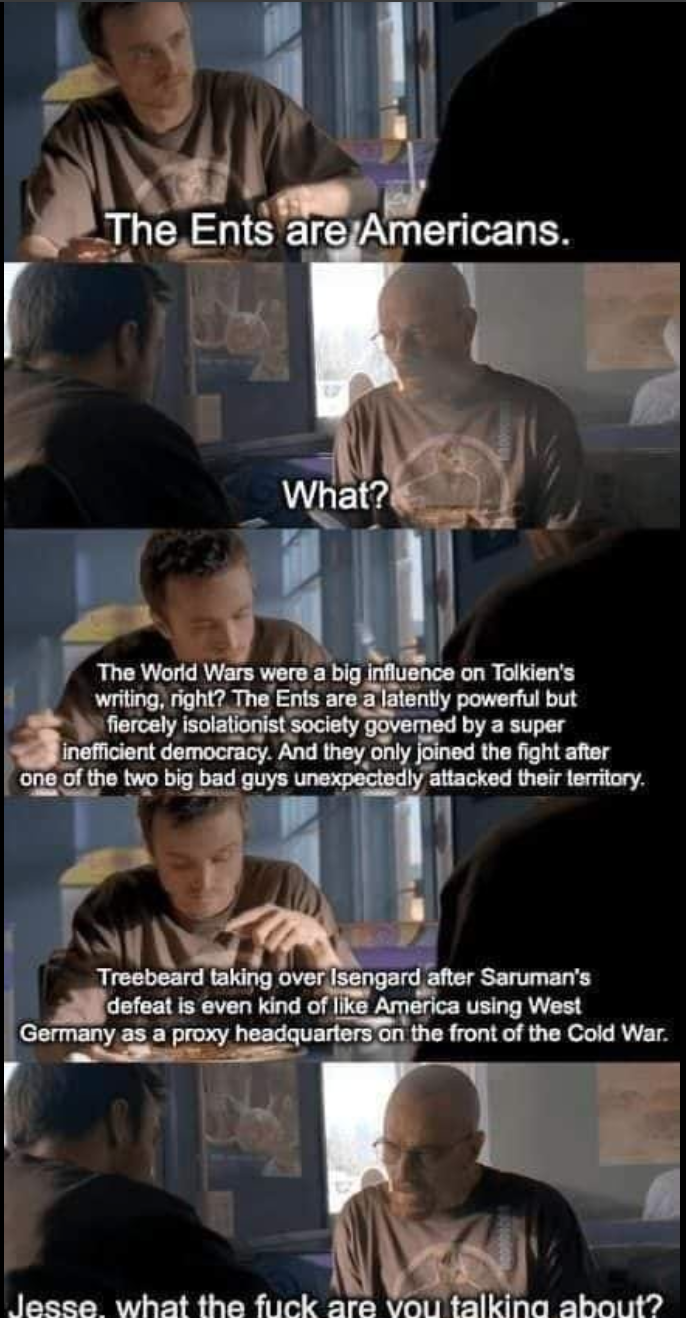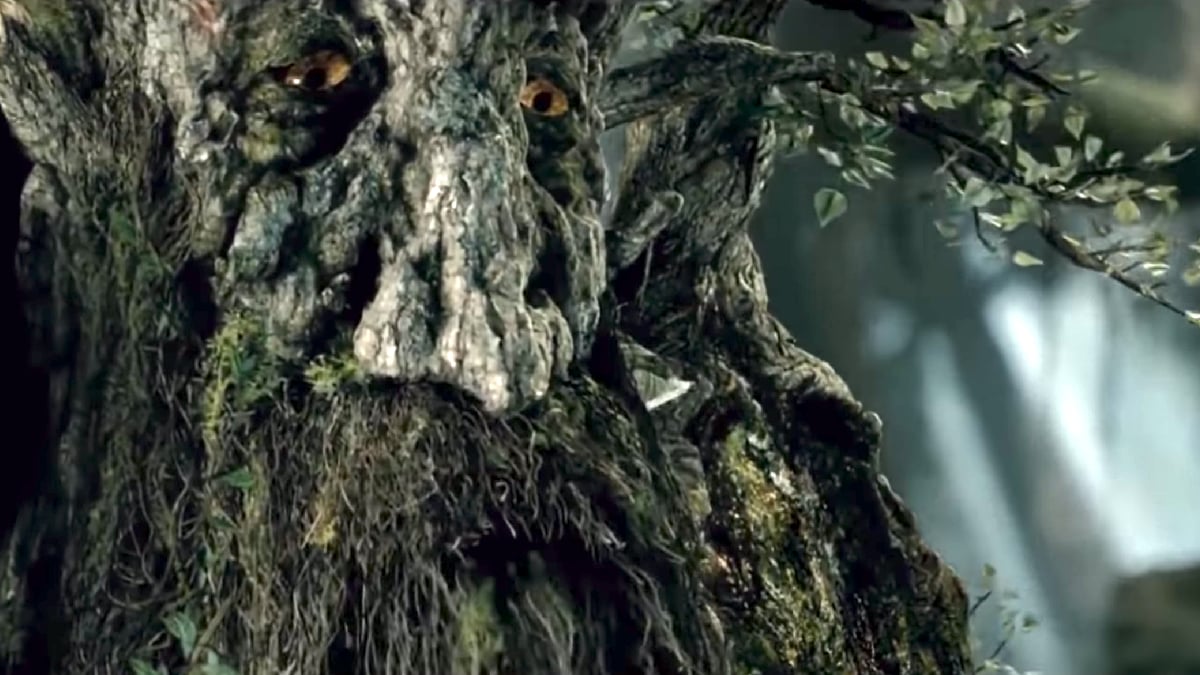A few things are perpetually true about the Lord of the Rings fandom.
Our obsession with J.R.R. Tolkien’s various works often reach concerning levels, we *will* fight you over those descriptions of a single leaf, and we will devolve into frenzied disputes each and every time the topic of allegory comes up.
These staples of the Tolkien fandom — what do we call ourselves? Tolkhards? Tolkeens? Tolkienites? — are ever-present, and crop up anew each time someone dares to criticize that glorious, 12-page description of a windy road or mentions how Sam is the true hero of The Lord of the Rings. Worst of all is, without fail, when the topic of allegory arises, an age-old debate inevitably kicks off in response.
It’s tradition, at this point, which makes it in no way surprising that a recent reference to allegory in Tolkien’s works set off a firestorm of discourse among readers. They dipped deep into Tolkien lore to disprove a surprisingly interesting theory, communicated to the masses via meme, of all things.
The meme, shared to Reddit’s dedicated sub for offerings of just that sort, details the connections between Ent society and the United States of America. It’s shockingly robust, genuinely convincing, and will most definitely color each and every future viewing of the treasured trilogy.

Using a tried-and-true Breaking Bad template, the meme works to explain how Tolkien’s “Ents are American.”
I know, it’s a weird assertion, but it gets pretty convincing — stay with me here. The meme goes on to explain that, per rampant claims that Tolkien’s works were heavily influenced by the World Wars, a comparison between Ent society and World War-era America are on-point.
“The Ents are a latently powerful but fiercely isolationist society governed by a super inefficient democracy. And they only joined the fight after one of the two big bad guys unexpectedly attacked their territory.”
The meme even goes on to compare Treebeard’s assault on, and conquering of, Isengard to America’s use of West Germany “as a proxy headquarters on the front of the Cold War.”
It’s a solid argument, and the more you think about it, the more it makes sense. While it’s fair to assume that, knowing Tolkien’s deep distaste for allegory, any links between Ent society and American society are coincidental – there’s no denying how well the argument holds water.
In the comment section of the post, readers delighted in the opportunity to poke fun at the notion of a U.S.-adjacent Ent culture, with jokes about “J. Robert Oakenhiemer” and “Doctor Manhattent” quickly distracting people from the discussion of allegory. It all came back around in the end, of course, as longtime Tolkien fans argued that the man would never insert purposeful allegory into his writings, and others pushed back with the notion that, intentional or not, the treasured author obviously drew “inspiration from a vast well of historical knowledge,” some of which was inevitably linked to the World Wars.
It’s a silly discussion, at the end of the day, but it perfectly encapsulates the best elements of the Lord of the Rings. These stories are rich enough to inspire debate and discussion more than five decades later, as fans from all walks of life converge to eye a longtime favorite through a new lens — and perhaps take on a new understanding of the many cultures and nods contained within Tolkien’s brilliant works.

